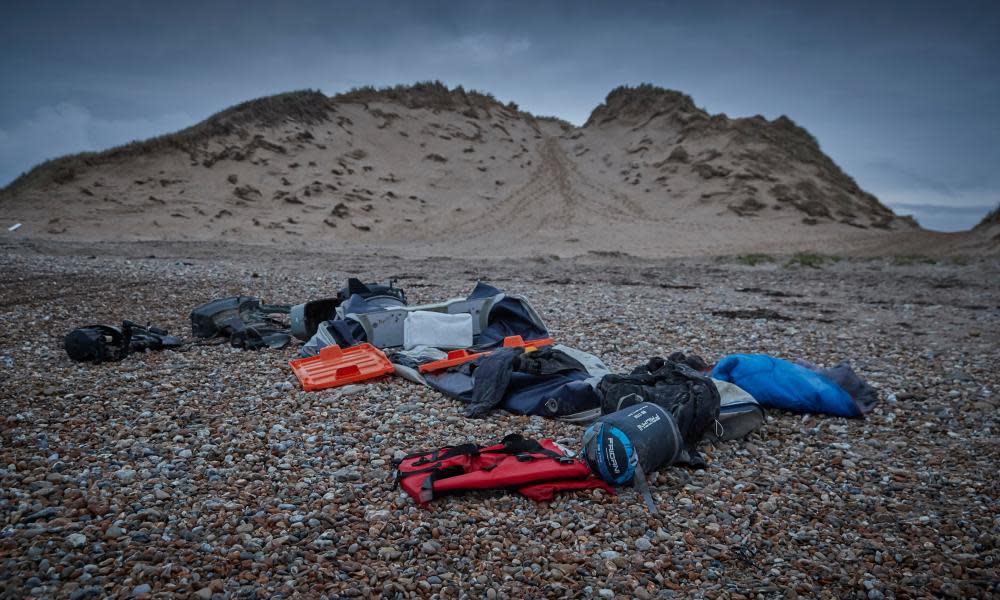Channel drownings: what happened and who is to blame?

At least 27 people have drowned in the Channel while trying to cross from France to the UK on Wednesday.
What happened?
An emergency search was sparked at about 2pm on Wednesday when a fishing boat sounded the alarm after spotting several people at sea off the coast of France. A joint search-and-rescue operation by British and French authorities was launched, and eventually called off late on Wednesday.
Police have said they believe the boat set out from the Dunkirk area east of Calais. The cause of the accident has not been formally established but the boat used was inflatable and when found by rescuers was mostly deflated.
Some reports in French media have suggested the inflatable may have been struck by a larger vessel.
Who were the victims?
Pregnant women and three children were among the 27 people, mostly Kurds from Iraq or Iran, who drowned trying to cross the Channel in an inflatable boat, according to French authorities.
Two male survivors, an Iraqi and a Somali, were being treated for exhaustion and hypothermia in a Calais hospital.
The public prosecutor’s office in Lille has confirmed that 17 men, seven women and three adolescents – two boys and a girl – died in the disaster.
Postmortem examinations will take place in the next few days to establish the exact identity of the deceased.
Why is it causing a political row?
The issues of Channel crossings has been a source of increasing tension between the UK and French governments for years.
But the rise in numbers reaching the UK in 2021 has hit a new high.
The UK has recently provided £54m financial support to the French to reduce Channel crossing attempts. This was supposed to fund additional police patrols of the French beaches – and over a wider area.
The UK government says France is not meeting its obligations, the French say they are and policing the beaches is not enough.
To add to the international tensions, the crisis is creating headaches for the UK government at home. Many within the Tory party – reportedly including the prime minister, Boris Johnson – are dissatisfied by the response of the home secretary, Priti Patel.
So who is to blame?
Depends who you speak to. Pictures of French police cars sitting by as people board flimsy dinghies in front of them have not helped the French case that the country is doing enough to tackle the issue.
Both the UK and French governments seem to agree that the role of people smugglers is key to the crisis.
But speak to experts in displacement and asylum and they will say the UK government is nowhere near to taking the right approach to address the causes behind the influx.
They argue that the establishment of safe and legal routes to asylum in the UK would reduce the numbers willing to take the risk of crossing the Channel. This could range from improved family reunion rules to the use of humanitarian visas permitting travel to the UK to apply for asylum.
Where did this crisis begin and why is it so bad right now?
The phenomenon of people attempting to cross the Channel to apply for asylum is not new.
But the numbers have surged in the last two years as the pandemic disrupted migration flows and restricted other means of travel to the UK – such as air, road and rail.

 Yahoo News
Yahoo News 
